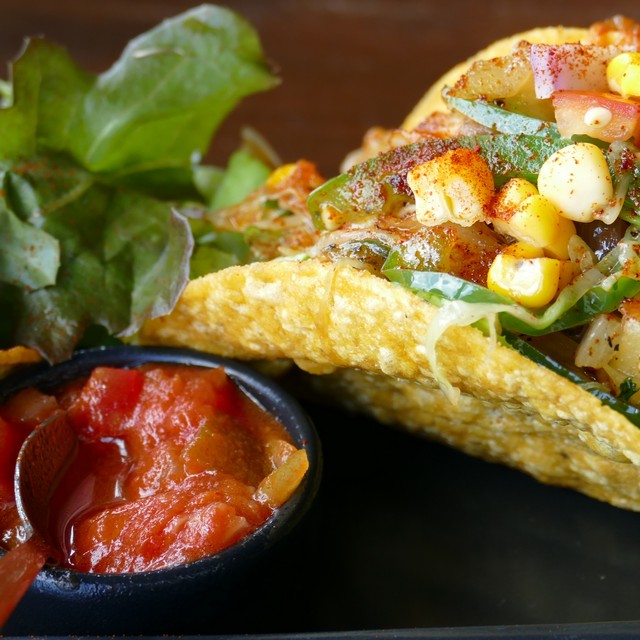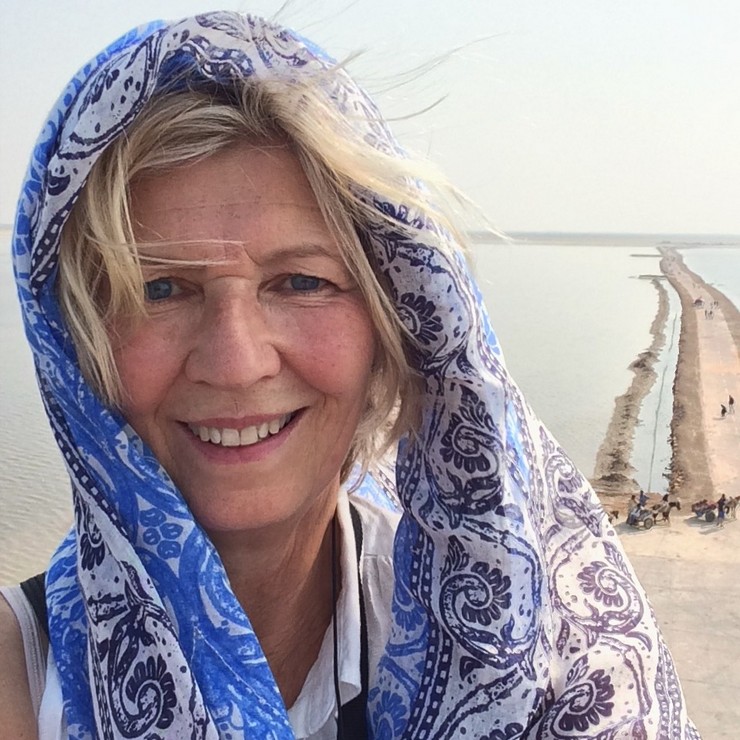
Day 1 : Oaxaca
Fly from Mexico City into Oaxaca. You will be met at the airport by a Travel The Unknown representative and brought to your hotel. Rest of the day free.
Overnight in Azucenas, Oaxaca
Meal plan: n/a
Discover the people, the sights and the flavours of Mexico’s culinary capital - the indigenous state of Oaxaca. This beautiful state in southern Mexico is a melting pot of cultures, traditions and peoples, a fact reflected in its rich, varied and delicious cuisine. Discover the ancient heritage of sites like Monte Albán and Mitla, and the stunning beauty and unique biodiversity of the Sierra Norte Mountains. Experience the best food and drink of the region as well as learning the region’s culinary secrets from some of Oaxaca’s best chefs and some who still use the traditional recipes of rural Oaxaca. Buen Provecho!
Oaxaca - El Tule - Tlacolula - Monte Albán - Santiago Apoala - Mitla - Hierve el Agua

Fly from Mexico City into Oaxaca. You will be met at the airport by a Travel The Unknown representative and brought to your hotel. Rest of the day free.
Overnight in Azucenas, Oaxaca
Meal plan: n/a

Visit the colourful traditional food market at Tlacolula. Spend some time learning about Oaxacan ingredients and absorb the buzz of this lively market. Drive to the village of El Tule, where you will see the world's widest tree, a marvel that has drawn biologists. The trunk of this Montezuma Cypress has a circumference of 36.2m and is thought to be about 1500 years old. From here we visit Caldo de Piedra, a restaurant that specialises in a pre-Hispanic dish of Chinantec origin knows as Caldo de Piedra or stone soup made with shrimp, white fish, chilli, coriander (cilantro), shallots and water it is all cooked by adding a hot rock to the bowl. The dish is traditionally prepared by the men, and served to honoured guests. Return to Oaxaca mid-afternoon. Rest of the day free to relax. Overnight in Oaxaca.
Overnight in Azucenas, Oaxaca
Meal plan: Breakfast & lunch

This morning we take a cooking class with renowned Oaxacan chef Pilar Cabrera. Take this opportunity to learn hands on about the complex cuisine of Oaxaca. Learn the secrets of a top quality molé, and when you are finished enjoy a delicious 5-course meal in a quaint secluded outdoor patio. In the afternoon take a short drive to Monte Albán, one of Mexico's most ancient and impressive archaeological sites - dating from as far back as 500BC. Overnight in Oaxaca.
Overnight in Azucenas, Oaxaca
Meal plan: Breakfast & lunch

After breakfast drive to Santiago Apoala in the lovely Sierra Mixteca mountain range. Gentle hike through canyon to the village of Apoala, exploring the village (hike is optional). Next we visit Doña Marina in her house where you will learn to make some local dishes. Overnight in the comfortable log cabins of Apoala.
Overnight in Santiago Apoala village cabins, Santiago Apoala
Meal plan: Breakfast, lunch & dinner

After breakfast optional hike to waterfall with possibilities to swim. Or just enjoy the peaceful rural setting. We prepare lunch with Doña Marina before returning to Oaxaca. Rest of the day free. We recommend a visit to the Museum of Oaxacan Cultures. Overnight in Oaxaca.
Overnight in Azucenas, Oaxaca
Meal plan: Breakfast & lunch

Morning free. Visit Teotitlan for micro-finance tour. This tour with our partners Envia (www.envia.org) will give you a real insight into the lives of local people in this traditional Zapotec village famous for its weaving traditions. This tour will directly fund small micro-finance projects which are small interest-free loans to help people to start or expand their businesses. You will visit people's homes and they will explain what they will do with the loan from their own homes or places of business. The benefits these small loans can bring to people is quite incredible and Envia will send you an update on the people who explained their projects once they have received their loans. Return to Oaxaca. Overnight in Oaxaca.
Overnight in Azucenas, Oaxaca
Meal plan: Breakfast & lunch

Cooking Class with famous chef José Luis Díaz. José is the founder of the prestigious restaurant, experience the Culinary Theatre at the renowned Casa Crespo. the main objective to promote only fresh seasonal products endemic to Oaxaca, making purchases in local markets, thus guaranteeing freshness and total quality in every dish. These are contemporary dishes made with traditional ingredients. The intention is to be playful, have fun and encourage creative cuisine. Late afternoon free in Oaxaca. Overnight in Oaxaca.
Overnight in Azucenas, Oaxaca
Meal plan: Breakfast & lunch

After breakfast drive to the bizarre terrains and petrified waterfall of Hierve el Agua. Take a dip in the highly mineralised water admiring the stunning landscape. Next visit the ancient pyramid of Mitla and learn the fate of the other fifty one. Lunch with Doña Chica in Mitla, Doña Chica's molés are famous in Oaxaca and considered to be the best in the whole state. After lunch we will visit a mezcal factory, learn about the distillation process and sample a variety of mescals with a variety of natural flavours across a range of ages. Return to Oaxaca. Overnight in Oaxaca.
Overnight in Azucenas, Oaxaca
Meal plan: Breakfast & lunch

After breakfast drop to airport for return flight to Mexico City.
Meal plan: Breakfast
All accommodation subject to availability. Final accommodation choices will be confirmed after booking.

Hotel Azucenas is a small Canadian-owned hotel in the colonial city of Oaxaca. The hotel has 10 rooms with private baths and the city’s best Rooftop Garden Terrace.

The cabins at Santiago Apoala village are situated in a beautiful location along the banks of a stream which comes down through a cleft in the high rock escarpments at the southern end of the valley. Modern and clean, there is also a restaurant available nearby.
Swim, dive and cruise the shores to discover Mexico's marine life
Explore Mexico's stunning mountains on foot
Unforgettable rafting and free-fall experiences in the heart of the jungle
Delve into Mexico's tapestry of craggy cliffs and copper-green canyons
Unwind on Mexico's idyllic white sand beaches
Trace Olmec, Aztec, Zapotec & Mayan roots
Trace the path of Mayan history - from antiquity to today
Discover the highlights of two Latin gems
Aztec ruins, Oaxacan flavours & colonial towns
The last bastion of indigenous Mexico
The festival where death never felt so alive.
A culinary tour of Mexico's gastronomy capital
Indigenous village trek in a world of biodiversity
Ancient history meets modern metropolis
Bill Dodd , Flavours of Mexico, MexicoHaving travelled to Mexico on various trips over the years I was surprised to find Oaxaca was so different. Many traditions that have died out elsewhere are still alive and kicking in Oaxaca. And the food is sublime.

Jeannie Saville , Flavours of Mexico, MexicoIt is not surprising that UNESCO has added Mexican cuisine to its list of cultural treasures worth preserving. The variety and quality of Oaxacan food is awe inspiring and ranges from street food to creative chefs in top class restaurants. All aspiring young chefs should visit the Sunday market in Tlacolula, a real feast for the eyes and the palette. We have learnt a huge amount on this tour about life in Mexico and the problems of Mexico`s indigenous people.

Caroline , Zapotecan Village Trek, MexicoThe hiking was amazing with spectacular scenery and knowledgeable guides. The luxurious but rustic wooden cabins were really welcoming after a long days hiking.
